Guide
Breeding Triops: These tips can save you a lot of trouble if you want to breed prehistoric crabs.
Breeding and keeping Triops is basically easy. If you want to breed and raise Triops, you only need a few utensils. You fill a breeding tank with water, add Triops eggs, switch on the lamp and wait until the next day. Usually within 24 hours – often even less than twelve – the Triops have hatched and the tiny nauplii can be seen in the tank. Breeding primeval crabs is in principle easy and can be done by anyone. However, beginner mistakes are often made in Triops breeding and the Triops do not hatch or meet an early death. If the Triops die, the breeding becomes a disaster already in the early phase. The anticipation of these primeval creatures quickly turns into disappointment. As a breeder, you begin to doubt yourself and ask yourself endless questions: What did I do wrong? Why is it not working for me? How can I successfully breed Triops? The good news is that anyone can successfully breed Triops. The most common reason for failed breeding is usually a lack of knowledge, followed by poor quality breeding stock. If you follow the tips described in this article and put them into practice, you will soon be able to enjoy your primeval crabs.
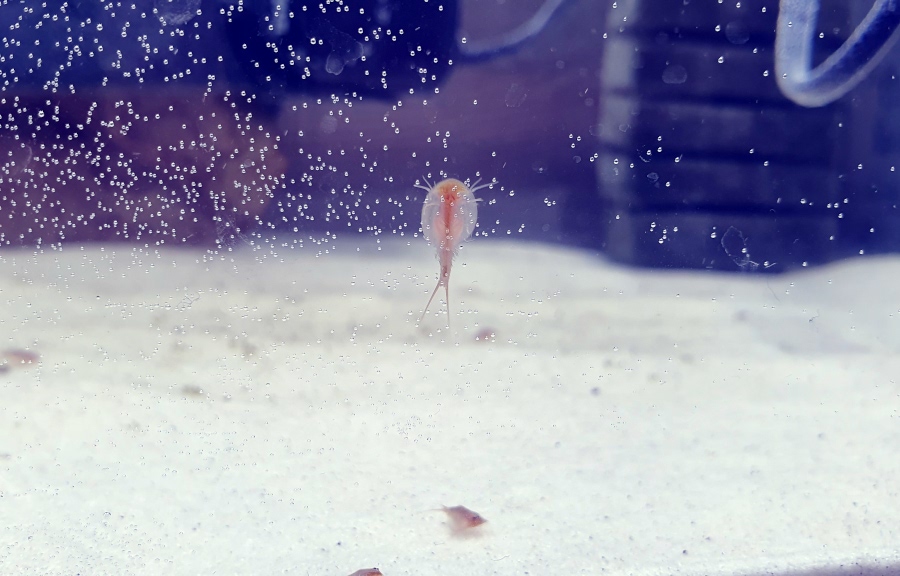
Breeding prehistoric crustaceans: Why should I breed Triops?
The motivation for keeping Triops or aquarium inhabitants in general is different for each person. Triops are among the oldest creatures on the planet and inhabited it more than 200 million years ago. After the dinos were wiped out in a mass extinction during the Cretaceous-Palaeogene boundary, the Triops survived until the present day. The Triops is thus a living fossil and a specimen of past life on Earth.
Breeding and keeping a piece of Earth’s history, older than 10,000 years before the beginning of the Holocene, in your home aquarium is really fascinating.
It’s like keeping a little dinosaur at home. 😉 But Triops are more than just prehistoric creatures – they are also little astronauts, because they have already been in space on the ISS space station. Especially for children, the breeding of Triops is very interesting and inspires the little ones. Due to the relatively short lifespan of about three months, there is not too strong a bond with the little animals as with a dog, cat or other pet. Children can breed the Triops and simply start a new breeding after the animals die.
Another reason why you should breed Triops is to preserve this prehistoric species. By breeding prehistoric crabs in your home, you help to prevent their extinction and even make them more popular. Because prehistoric crayfish are severely threatened in nature today. Humans are increasingly depriving these primeval creatures of their habitat through cultivation. In 2014, the Bavarian State Office for the Environment conducted a study and examined all known sites of discovery in Bavaria over the past decades.
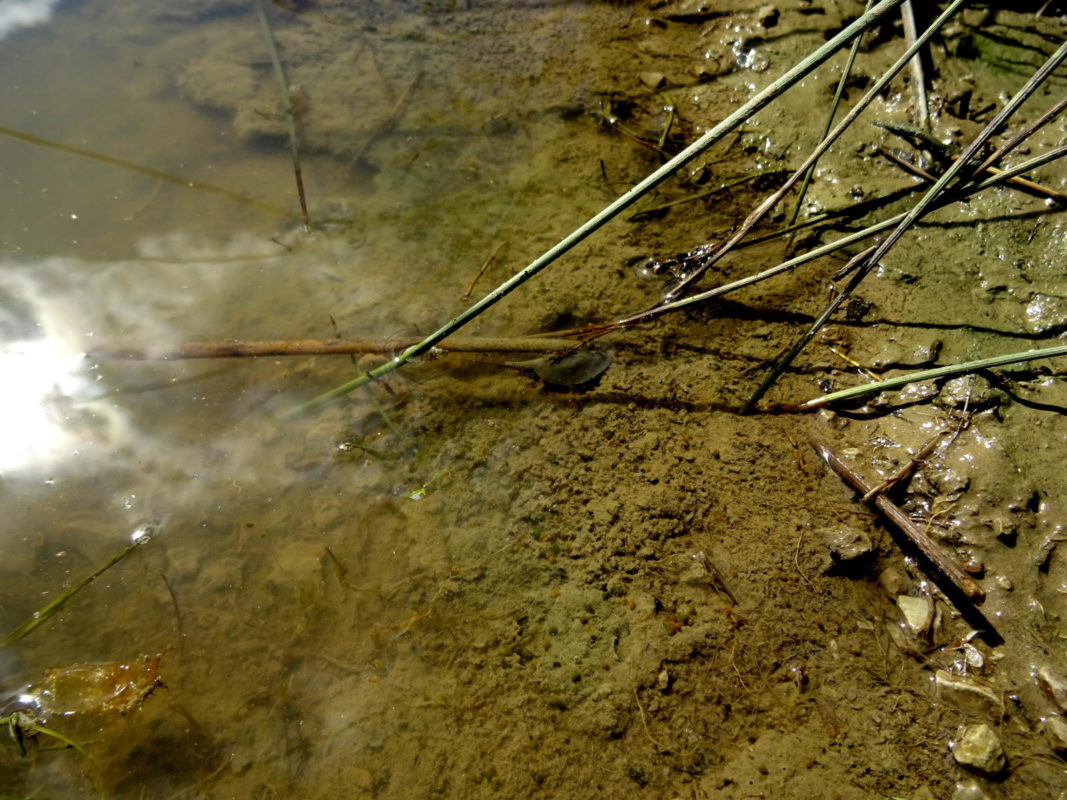
The investigations have shown that the conservation status of the species in Bavaria has to be assessed very critically. There are only about 630 known habitats left in Germany and Austria, which is alarmingly low. However, one should not breed primeval crayfish at home and then arbitrarily release them into the wild or take them from the wild.
Breeding Triops: What are Triops?
Dinosaurs inhabited the planet over 200 million years ago until they were wiped out by the tragic mass extinction during the transition from the Cretaceous to the Palaeogene. The era of the dinosaurs came to an end. The Triops were quite different; they proved to be extremely resilient and survived until modern times. Today, anyone can breed Triops at home. The name “Triops” means “the three-eyed one” in Greek, as the little animals have three eyes as a result of an evolutionary process.
Triops is the genus that belongs to the order of dorsal shellfish in the class of gill-foot crabs or Branchiopoda. Back shell crustaceans are also called Notostraca, shield crustaceans or also jawed crustaceans. Together with the genus Lepidurus, Triops belongs to the Triopsidae, which is the only family within the dorsal crustaceans. Triops cancriformis is today considered to be the oldest living species and was found in a more than 200 million year old Franconian Keuper as the subspecies Triops cancriformis minor (†).
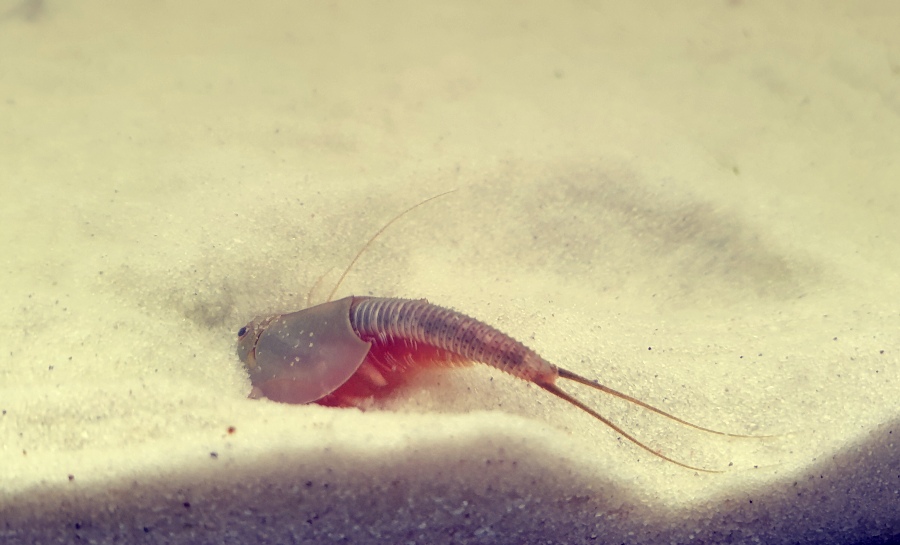
Females clearly predominate in the Triops population, while males are a rarity with a population of just ten percent. Cannibalism is quite normal in Triops and especially widespread in the American species Triops longicaudatus. This should be taken into account if you want to breed prehistoric crabs. The breeder can counteract cannibalism by feeding a balanced diet rich in protein, e.g. worms. Triops have a life expectancy of between one and three months. Like dwarf crayfish and shrimps, Triops have a carapace that sits like an exoskeleton. This forms outside the body, serves as protection and still ensures a high degree of mobility. Triops shed their skin regularly.
The natural habitat of the primeval crayfish is the water ponds and puddles created by rain showers and floods, as well as temporary bodies of water on clayey soil. Today, many habitats are destroyed by cultivation and development, so that this species is considered highly endangered.
Breeding Triops: What should you look for when buying Triops eggs?
Where should you buy the Triops eggs? At Triops Galaxy, of course. 😉 Basically, you can buy your eggs from any good breeder. But as a beginner, you may have to try out different breeders until you find the best product for you. In my early days as a Triops breeder, I had countless false starts with my first breedings and was incredibly annoyed. I spent more than 80 euros on breeding stock, water and accessories until the first eggs hatched.
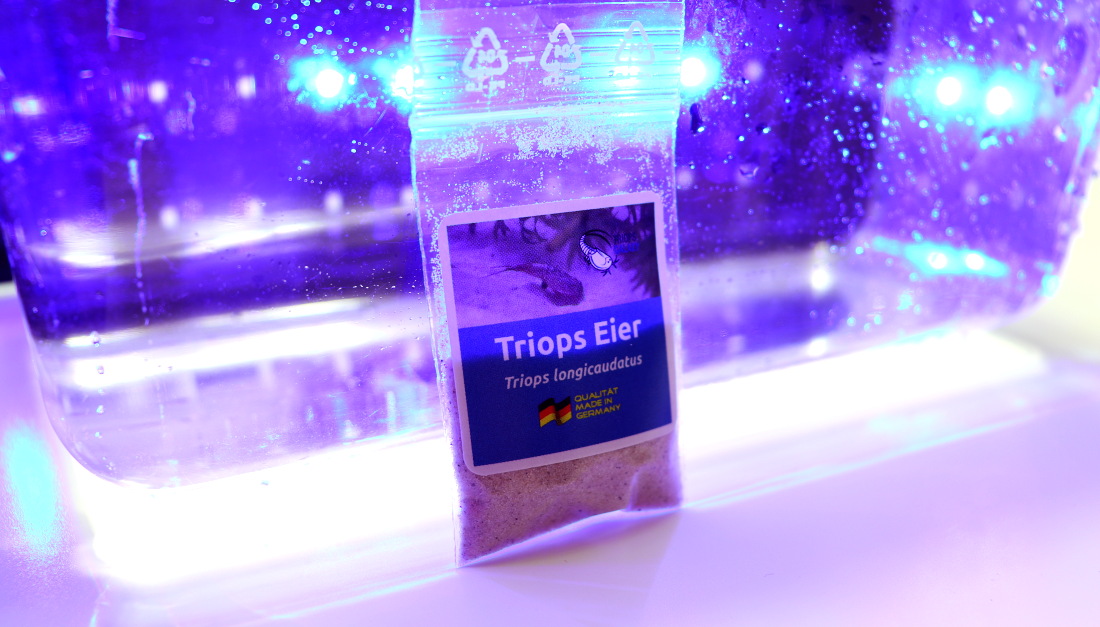
Many hobby biologists who want to breed Triops feel the same way. Even breeders who have already bought an experimental box know that the hatching probability of Triops is very low. From my experience I can say that the eggs offered in the trade often come from huge breeding farms. There they are stored for a long time and incorrectly and in combination with a lack of knowledge on the part of the breeder as well as incorrect instructions, Triops breeding is doomed to failure from the start. Simply nothing hatches.
But what distinguishes quality eggs from the inferior ones? The reason lies in the breeding process. If bred incorrectly, the eggs are poor. The eggs need at least two weeks after laying to develop completely. Only then are they ready for drying and winter simulation. In large farms abroad, Triops are bred en masse and this time is usually not given. The result:
The eggs are not capable of hatching.
Such bad eggs from factory farming are also mixed with “dead sand” here in Germany. This means that the sand was never in the aquarium and therefore contains no nutrients to nourish the nauplii in their first days of life. I always leave the eggs in the water for at least two weeks to allow them to develop. I also use a balanced diet with the branded food as well as live food such as worms, but also fruit and vegetables.
A balanced diet results in a significantly higher hatching rate.
We summarise: If you want to breed primeval crabs, it is best to get the Triops eggs from a local breeder and by no means from industrial breeding. With a good local breeder, the eggs have enough time to develop after being laid and the Triops get a balanced diet.
My Triops do not hatch
Under the best conditions, the Triops hatch after 24 hours. Here at Triops Galaxy the nauplii hatch after 13 hours.
But it does happen that the Triops do not hatch even after a week. The breeder is then disappointed and many give up in resignation. But it is quite normal that it takes a little longer for them to hatch. If you want to breed Triops, you should be patient. Sometimes it takes up to two weeks until the first nauplii can be seen in the tank. I have often tested a lot in my breeding and have made the experience that Triops hatch much faster in heated breeding tanks than in unheated ones.
Since we can assume that you always use quality breeding stock from local rather than industrial breeding, it can still happen that the Triops do not hatch. In the following, I describe the most common reasons for this.
1. Too little light
In their natural habitat, Triops have perfect light conditions. In domestic breeding, breeders must always provide good light. It is important to know, if you want to breed primeval crabs, that the Triops cannot hatch without light. The light triggers the hatching stimulus. LED aquarium lamps are excellent for breeding Triops. Most lamps have a day and a night mode. The night mode simulates moonlight. During the day, the lamp should burn for at least twelve hours if you want to breed Triops. However, the American species Triops longicaudatus is also happy with two extra hours of light.
2. The use of the wrong water
One of the most common reasons for Triops not hatching is the use of the wrong water. Tap water should be avoided, as in most cases it is too hard and contains chlorine. If the water contains too much chemicals, the primeval crabs will not hatch. The breeding experience here at Triops Galaxy has shown that river water is excellent for breeding as it contains many vital minerals, nutrients and microorganisms. The same is true for water from lakes or streams. If you don’t live near a river, you can also use rainwater. The combination of distilled water and still mineral water is also very good for breeding. The mixing ratio of 70 percent distilled water and 30 percent still mineral water ensures good hatching results.
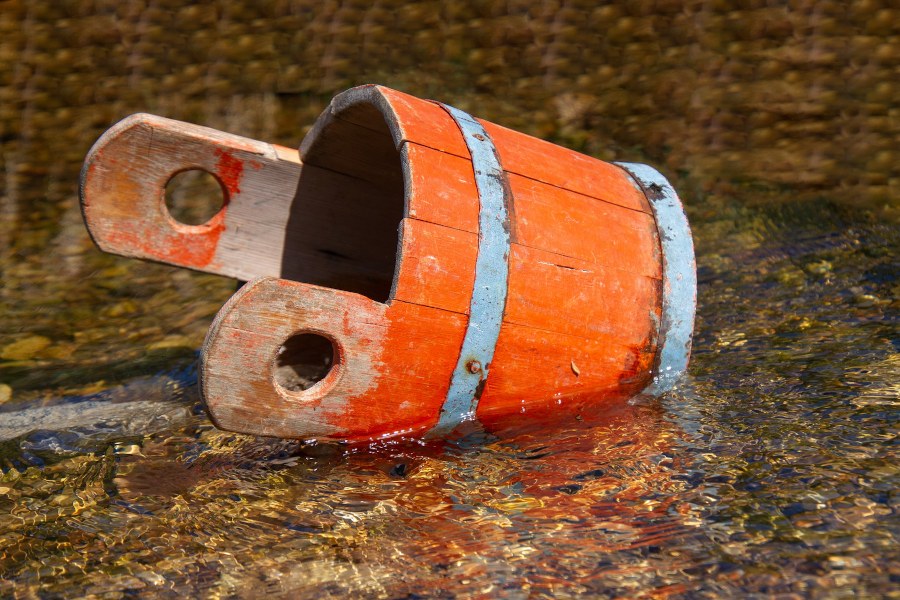
3. Water temperature does not fit
The correct water temperature is, next to the water quality, the most important criterion if you want to breed primeval crayfish. If the water temperature is wrong, the animals will not hatch or will die when they are nauplii. In summer you can usually do without a heating rod, but in winter the tank must be heated additionally.
In the table below you will find an overview of the required temperature for the most common species.
| Triops Cancriformis | 20 – 24 °C |
| Triops Longicaudatus | 23 – 26 °C |
| Triops Longicaudatus Red | 23 – 26 °C |
| Triops Beni kabuto ebi Albino | 22 – 25 °C |
| Triops Granarius | 24 – 26 °C |
| Triops Newberryi | 27 – 31 °C |
| Triops Australiensis | 27 – 31 °C |
4. Conservation of nature
Nature is a lot smarter than humans think. Nature-based species conservation ensures that Triops have survived to the present day and are considered a prehistoric species. In the wild, they live in pools of water and puddles created by seasonal flooding. Before the waters dry up, the females lay permanent eggs. These eggs show extreme resilience and can survive extreme heat, cold, drought and UV rays for many years. The eggs come into contact with water in good climatic conditions and a hatching impulse is triggered by activating the eggs.
However, not all eggs are activated, only about every fourth egg hatches into a nauplius.
The other eggs only hatch in many years and decades. Until then, they remain in a dry state. Through this phenomenon, Mother Nature ensures the preservation of the species of primeval crabs. If all the eggs were to hatch at the same time, the animals would not be able to survive for many millions of years. What an ingenious survival strategy, isn’t it? That’s the reason why prehistoric crabs have survived until today and are among the oldest living creatures.
Tip: You can dry your unhatched eggs again, freeze them and breed Triops again.
What accessories do I need?
Especially in the beginning, you don’t want to spend so much money and approach Triops breeding with minimal financial effort. The good news is: you can start and breed Triops without high costs. In this section, we will go through all the necessary utensils and I will explain in detail how to use them.
You will need the following accessories:
- Transparent container
- Water
- Lighting
- Heating rod
- Thermometer
- Triops eggs (egg-sand mixture).
With this you are well equipped and can breed primeval crayfish. To make breeding a little easier, you should also get the following utensils:
- Pipette
- Test tube
- Toothpick
- Injection
- Sea almond leaves.
Take water from the tank with the pipette and put it into the test tube, into which you have previously put some spirulina powder (only a toothpick tip) with the toothpick. Pour this mixture from the test tube into the water and feed the nauplii for four days from the second morning after hatching. The syringe is used to clean the tank.
We will go through the most important utensils below.
1. Container
The container should have a capacity of up to five litres. The Triops should be able to hatch in it and survive the first two weeks. The tank should not be too large, otherwise the animals will not find the food in the first few days and die. For this reason, you should not use a large aquarium if you want to breed Triops.
2. Water
The topic of water has already been explained in the article above. If you want to learn more about water, check out the guide article “Which water is best for Triops“?
3. Lighting
Light is essential if you want to breed Triops. Without light, the Triops will not hatch, as this triggers the hatching stimulus. The light source can also serve as a heat source, but it should not be used as a substitute for a heating rod in winter, as the temperature drops sharply when the LED lamp is switched off and the required water temperature is no longer given. In the worst case, the nauplii will die.
4. Heating rod
Manual heating of the rearing tank is necessary especially from late autumn when temperatures drop and of course in winter if you want to breed primeval crayfish. Heating is not required in summer. For the species Triops longicaudatus, a room temperature of approx. 19 °C is usually sufficient, even in winter, but for other species that require significantly higher temperatures, a heating rod must be used.
5. Thermometer
A thermometer is used to determine the water temperature. However, many heating elements have a temperature display, so that you can do without the thermometer and do not have to buy an additional one.
6. Breeding kit
I have described the criteria required for a qualitative Triops breeding stock in detail in this article. Here at Triops Galaxy I offer Triops eggs in different price ranges with different egg quantities. Currently, there are breeding kits with 50, 150 or 300 eggs, whereby the figures are approximate. So which breeding kit should you buy if you want to breed Triops? I always say that 50 eggs are enough and you can start breeding wonderfully. If you want to be on the safe side, it is better to take 150 eggs and if you have several breeding tanks, take the bag with 300 eggs.
7. Sea almond leaf
If you want to breed primeval crayfish, a sea almond leaf is an absolute must. For many years, this plant has been highly valued by breeders in domestic aquariums. The reasons are obvious, sea almond leaves have a disinfecting and fungicidal effect. They hold back pathogens and improve the quality of the water. The sea almond tree (Terminalia catappa) and its leaves are used in aquaristics as a preventative against fish diseases. The plant contains many positive ingredients such as humic acids, tannins and flavonoids. They help regulate the cells of the fish and lower the pH value. The immune defence of the aquarium inhabitants is strengthened.
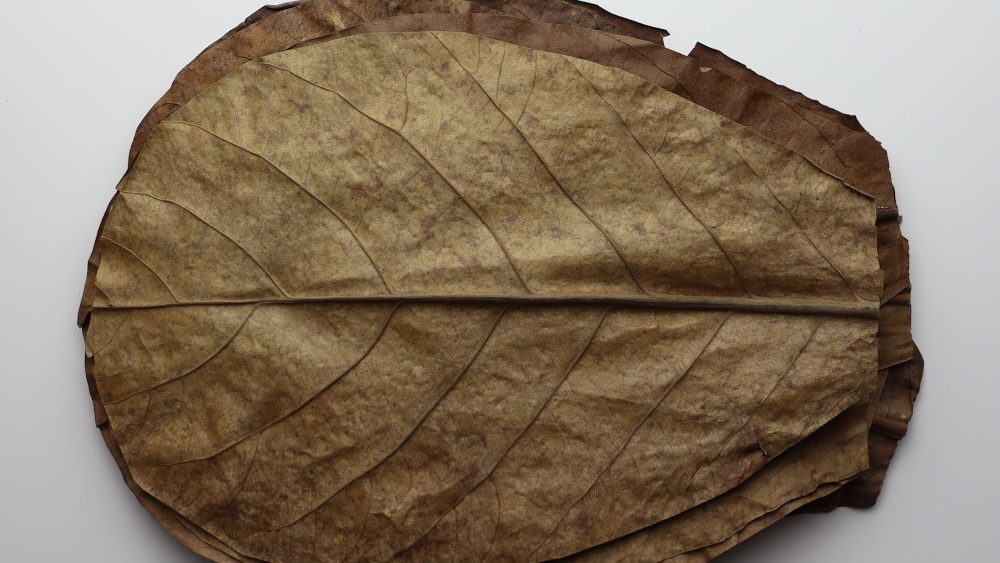
Triops step-by-step breeding guide
How can I breed Triops? Here is a complete step-by-step breeding guide. In this compendium you will get all the necessary steps to successfully breed Triops and have a lot of fun with them. Let’s get started.
- The pool is cleaned with water and without detergents. It should be free of residues. All breeding utensils are cleaned with water only.
- The container is filled with water (river water or a mixture of 70 percent distilled water and 30 percent still mineral water. More information on this topic → Advice article).
- The LED aquarium lamp is placed above the basin to ensure a constant temperature.
- A few small pieces of sea almond leaf are added to the water.
- The breeding stock is put into the water. It is important that the eggs do not stick to the edge of the tank, with the toothpick these can be pushed into the middle of the tank.
- Now we have to wait and see. After about 24 to 72 hours (or even earlier) the first nauplii will have hatched. However, it can also take a good two weeks.
- On the second morning after hatching or after 48 hours, feed the nauplii for the first time. A toothpick tip of the juvenile food (spirulina powder) is quite sufficient. You should feed the nauplii twice a day and by no means overfeed them.
- Once the Triops have reached a size of approx. 1 cm, they can be relocated to a larger tank – or even an aquarium.
- After the animals have been fed with the spirulina powder for four days, they are fed with decapsulated Artemia eggs for the next ten days. Depending on the size of the Triops, feed two to three times with the toothpick tip. This food is the transitional food until feeding with solid food.
- After ten days of feeding with decapsulated Artemia eggs, feed the Triops with solid food such as the main feed. One pearl per animal per day is sufficient.
You can also download these rearing instructions as a PDF. Click on the button below.
Breeding Triops – Conclusion
Triops breeding is interesting and fascinating at the same time. Be patient and don’t get too angry if things don’t work out right away. Don’t doubt yourself and don’t think that failure is entirely your fault. As I said, it took me several attempts until the nauplii hatched in the tank. You simply have to try out and experiment a lot. It wouldn’t be any fun if it was too easy and the eggs always hatched. Then you would have no incentive to make an effort and learn more. 😉
This article has already given you the absolute basics on how to breed primeval crabs. For more in-depth information and background knowledge on the subject of primeval crayfish, take a look at the Triops Galaxy guide or the YouTube channel, where you will find much more useful content.
Good luck and have fun with your Triops breedings!
- Introduction to the basics of ichthyology - 28. April 2024
- Palaeontology: Fossil traces from China point to raptors - 27. April 2024
- 130 stranded whales rescued in Australia - 26. April 2024